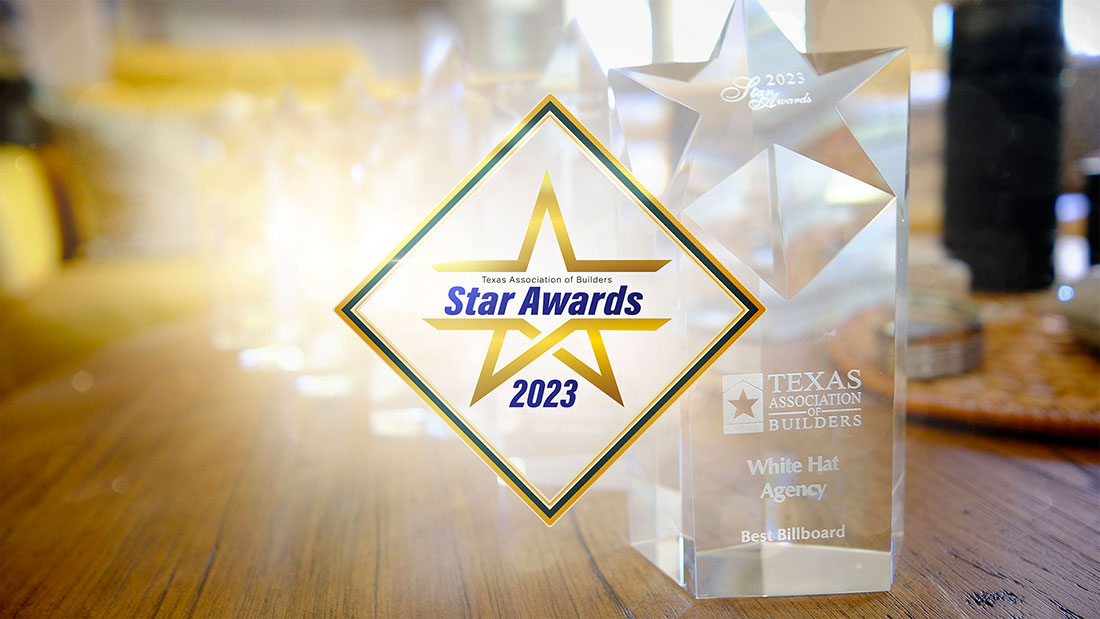AUSTIN, Texas. August 2, 2023 – White Hat Agency took center stage at the Texas…

The Modern Copywriter: The Evolution Of Soft Skills For Hard Times – Pt 3
You say you want an evolution?
As we discussed in Part 2, there’s quite a number of people who have been sounding the death knell of copywriting, for some time now. The idea is that with visual and social media promotions yielding great results for many, copywriting appears old-fashioned and ineffective, in the fast-paced digital world. If so much can be communicated with video and everyday conversation, then what is the use of structured, grammatical copy, in this day and age? In this article, we’re going to examine how copywriting is continuing to evolve; possibly in a more important (albeit subtle) role than ever before.
I would say that the Web 1.0 (the first “era”of the Internet, from its origins to mid-2003) was primarily about the sharing of information, from a few expert sources; as well as pointing user to countless portals, directories, and catalogs. The majority of early Internet users were readers; spectators of static text and image pages. Whereas, Web 2.0 has been about about interactivity, conversation, opinions and debate. It’s the era of user-generated content; on dynamic pages which expand, contract, animate and more. Users are now active participants in discourse, often taking authoritative positions on various topics of interest. Now, the consumer often is enthusiastic to make pitches to family and friends about brands, services and products they enjoy, via video and text reviews. Word-of-mouth ensues.
However, those trendsetters still have to find out about products, services and brands; some way, somehow. Products don’t distribute and market themselves (Not literally, anyway. At least probably not until the year 2067…). Unless businesses plan to send products and service providers to consumers’ homes for free, at random, and hope that they’ll talk about it…advertising must be done; copy is still needed for that.
With much needing to be communicated in smaller amounts of time (due to attention fatigue) and increasingly smaller spaces (limited characters, smaller screens, etc.), professional copywriting is a still an viable mode of communication in modern advertising. As we mentioned earlier, even brevity itself can take time and be an art, unto itself. Especially when the entire story of a product, service, or brand needs to be told within the span of a few lines; or a few minutes, or even seconds of a video.
Copywriting remains an effective tool towards converting a person who’s skimming because they “just wanted to have something to do”for the moment…in to a person who wants to do something in the moment. Buy. Learn. Make a decision. All of these are forms of selling that reader/viewer on the underlying message.
The Internet is an integral part of the complete marketing effort. As business owners place increasing emphasis upon the importance of today’s social media, gadgets and apps; and advertising takes on more forms in the digital realm, copywriting has gotten a bit more complex. Many writers who worked in “traditional” media now write for Websites and interactive media such as email, banner ads, book trailers, online sales letters and more.
Now, With 5 Essential Vitamins… and Tech Skills?
In addition to the traditional skills we discussed in Part 1, today’s copywriter needs additional specialized skills, in order to be wholly effective in this diverse new world of advertising. These skills and tools go far beyond anything his or her predecessors ever needed in their arsenal. And this is a large part of the reason a lot of people don’t realize that copywriting is still all around us, as crucial as before — it’s being delivered in many more ways.And with even average citizens accomplishing complex tech tasks with minimal effort, the different ways that copywriting has taken form is less noticeable. As with traditional skills, many of these new skills are closely-related but different beasts, all the same.It’s not that the modern copywriter has to be a master of all of these skills – but some experience in these areas allows him/her to develop better content for digital mediums:
- Technical Savvy. Effective copywriting can still be created with pencil and paper, sure. The modern copywriter doesn’t necessarily need to be a Web developer, but should be able to work with Web designers. He or she would do better to understand the difference between a splash page from a landing page, and have an understanding of CTR (click-through-rate) and other related analytics.
- Foundation in Content Management and Strategy. This includes specifics, such as an understanding of Search Engine Optimization (SEO). One of the last things anyone wants to happen with Web-based content is for it to become lost in the shuffle. A copywriter with SEO experience will keep in mind keywords to use in his / her Web-based work, to get the most eyes upon it. Not just throw a bunch of keywords in, at random, but integrate it in an organic way which makes sense, flows well, and still manages to do its job of informing and/or convincing its reader. They will also understand the basics of Web navigation, traditional user expectations, and how various elements tie together as part of the complete presentation; how it affects communication. SEO-related copywriting may be dying, in terms of people cramming in as many random words into articles as possible. However, that’s different than good old-fashioned content copy (what we traditionally know as copywriting).
- Interest in Emerging Technologies. Similarly, especially as the market continues to acquire new apps and devices; and the Internet itself continues to change, it’s important for copywriters to stay attuned to new developments. What are people using? How does it work? What features (and limitations) can be exploited for the best communication? What innovations can be made? For example, in recent years, we’ve seen radical changes with tablets and smartphones. It’s not enough to be aware that these things exist, but to be aware of strengths and limitations so that appropriate and effective content can be created for them.
- Approachability. Nope. This isn’t about whether you find your copywriter likable enough to have over for dinner. This is about understanding of medium. A copywriter needs to be aware of how the Internet works – behavioral patterns, expectations.Internet users don’t like feeling like you’re selling them something, even when they come to buy. More than ever, the Internet is often used as a social tool, before all else. Pitches are being made, even by casual conversation. The modern copywriter needs to understand the sort of underlying etiquette of the medium – and how to become not merely advertise to, but recognize and seize opportunities by which he/she be a participant in dialogue with consumers. With people.
- Design. Many copywriters, from what’s known as the “Golden Age of Advertising”, had an understanding of design theory and principles; some even managed to become Art Directors and Creative Directors. It’s not required for a copywriter to be a master illustrator or Web developer, but it’s become more of a frequent occurrence to also possess some design skills. The proliferation of computers with integrated graphics creation tools has allowed many more to dive in and create concepts (and sometimes more), without formal training. Not every copywriter can be an expert designer, but it helps to strengthen communications with the Art department. It also lends itself to a better understanding of what’s possible, regarding text layout, fonts, spacing, and interactivity.
As long as a sales message needs to be delivered to a consumer, it simply is not possible for content copywriting to ever go away. Well, there is a way it could disappear. When an invention arrives, which will allow a consumer to plug his/her brain into a kiosk… which will then convert visual images directly into effective sales pitches inside of the brain’s synapses, and without the involvement of a single word.
So yeah… Until then, copywriting is here to stay. Through Web 3.0, Web 4.0… and wherever that all leads to.
There may be less copy as we know it, and we may yet occasionally call it by other names (such as Infographics). But the words will continue to come.Information will continue to flow. Products and services will continue to sell.Decisions will continue to be made.
It’s that simple.
Did you miss Part 1 and Part 2 of the series?
References
Sullivan, Luke (2012).Hey, Whipple, Squeeze This: The Classic Guide to Creating Great Ads, Fourth Edition. Wiley.
Ogilvy, David (1985). Ogilvy on Advertising. Vintage Books.
Barry, Pete (2008). The Advertising Concept Book. Thames & Hudson.
Pricken, Mario (2008). Creative Advertising:Ideas and Techniques from the World’s Greatest Campaigns, Second Edition. Thames & Hudson.
Jammes Luckett is Marketing Matter’s Summer 2014 Copywriting Intern.Luckett began her career as part of the award-winning team at Macey Lipman Marketing (MLM), as its youngest National Marketing Director; and concurrently was a Contributing Editor for several of its music and culinary publications.She later became head of the Research department at iNetNow, Inc., and went on to serve in a number of key creative and technical roles on major and independent productions; spanning film, television, music, theatre, radio, and animation. Jammes is an alumni of Denison University and The University of Southern California.In her spare time, she writes speculative fiction; and also records electronic music inspired by many different genres and eras.



